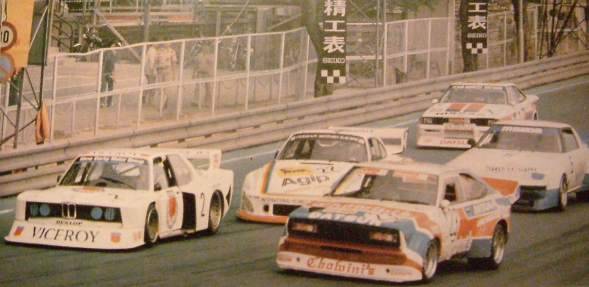How does putting all of that traction and weight that far out from the hub affect the handling characteristics of the car?

Image stolen from here

Posted 05 March 2013 - 22:36

Advertisement
Posted 06 March 2013 - 00:10
Posted 06 March 2013 - 05:11
Posted 06 March 2013 - 05:48
Okay - so it was a poorly worded question: What impact would having all of that wheel/tire offset like a big cantilever vs. the same 300mm tire in a more balanced geometry? What
Posted 06 March 2013 - 09:23
Posted 06 March 2013 - 16:03
Interesting. I understand the load on the bearings being different at the hub but why the axles? Or is it eating them up right at the hub, so part and parcel of the wheel bearing failure? My guess was that behind the hub, in the rear at least, nothing would have changed except perhaps for the mass it's dealing with - which shouldn't impact the axles assuming the mass is reasonable.The poor old diff, axles, or driveshafts really do not like that sort of offsets though, wheel bearings and axles have a fairly short life.
I have no idea what that lone what was about.Okay - so it was a poorly worded question: What impact would having all of that wheel/tire offset like a big cantilever vs. the same 300mm tire in a more balanced geometry? What
Posted 06 March 2013 - 21:43
Interesting. I understand the load on the bearings being different at the hub but why the axles? Or is it eating them up right at the hub, so part and parcel of the wheel bearing failure? My guess was that behind the hub, in the rear at least, nothing would have changed except perhaps for the mass it's dealing with - which shouldn't impact the axles assuming the mass is reasonable.
Posted 06 March 2013 - 22:37
Posted 06 March 2013 - 23:15
Posted 06 March 2013 - 23:30
A touch???A torch
Posted 07 March 2013 - 10:54
Whats wrong with getting camber with the oxy? Though a bit rough on the axle bearings,, and seals! Actually for small camber and toe changes it always worked fine. And with ball ended floaters it is not a problem at all. Like about 2 deg max.Or about 2mm of toe in.Next time you get a reasonably powerful RWD hire car with IRS, get a paint pen and draw a stariht line down the halfshaft. Then go and play boy racer. Then look at your nice straight line. That's why axles only have a limited life. Also, in a live axle, the outboard end of the halfshaft does not have a perfect life - racers often camber and toe the wheel via various ungodly means (we used to touch the axle tube with a welding torch). As such it sees bending stresses that it wasn't designed for.
Posted 07 March 2013 - 10:56
Does the same to the rear axle too. A good way to break the axle off on the shoulder where the bearing locates. That is where you crack test, regularly.Perhaps Lee was referring to stub axles on front uprights. Increased offset would produce higher bending stresses in this component.
Posted 10 March 2013 - 17:36